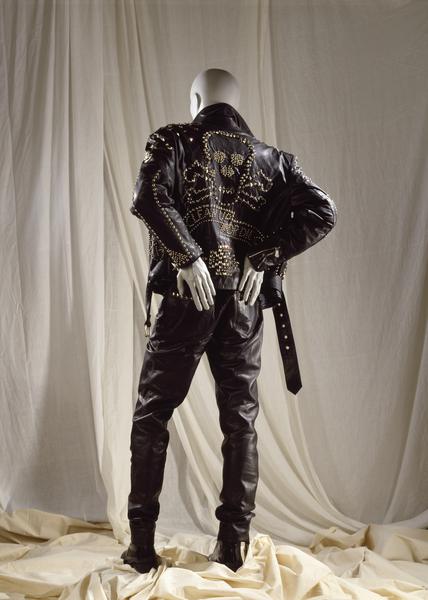Hi everyone - hope you are all doing okay during this strange time! I
was wondering what I could write about as I know my content has been lacking so
far this year. In the end, I thought it might be best to write about things that anyone can
make/do at home (seeing as that's where most of us are at the moment). I put a poll
on my Instagram story (if you want you can follow my account here @ohames) to
ask what DIY you guys would rather see first, so here is how to make your own wrap
skirt:
This is a very easy and quick way to add a new piece of clothing to your
wardrobe without costing the planet - if you don't have enough fabric try to
avoid buying anything new (use that ‘make do and mend’ mindset) and use what
you have lying around, you can use an old duvet set or bed sheet and give it a
new lease of life. I have been given quite a lot of old fabric from
family members who no longer wanted it, so always ask around in your family
to see what you can get your hands on.
These are all the bits and bobs you will
need:
- Spool of thread that matches a colour in your fabric - I have chosen white polyester thread for this skirt
- Sewing Machine - if you don't have a sewing machine you can always hand stitch using a continuous running stitch (see below for further instructions for this) but it will take a bit longer than using the machine
- Fabric - roughly 1mx1m of your chosen fabric (or a single duvet cover in my case)
- Fabric scissors
- Tape measure
- Ruler
- Pins
- Pencil/Tailors chalk
- Notepad
- Small embroidery scissors or an unpicker
Grab your tape measure and measure…
the length you want the skirt to be (I measured 36 inches and I'm 5ft 3, I wanted to make a long skirt, so this measurement reached my ankles)
your waist - then add half of your waist measurement to the original waist measurement. For example, my waist was 29 inches (29/2 = 14.5) 29 + 14.5 = 43.5 inches
the waistband - to ensure the ties are accounted for use the previous measurement (43.5 inches) and double the number 43.5 x 2 = 87 inches and add 2 inches for seam allowance - the length of this waistband would therefore be 89 inches. The width of the waistband is up to you, however, make sure it is double what you want it to be. For example, I wanted a 2 inch waistband so I made the width 4 inches as the waistband folds over the top raw edge of the skirt.
Once you have measured all three parts you can start to sketch out the skirt shape and waistband with a ruler and pencil (or tailors chalk) - it is easier to cut the skirt and waistband on the fold like the diagram below...
Instructions:
After you have cut out the waistband and skirt, pin and sew up the two lengths of the skirt, then sew the bottom hem
You can overlock then sew the edges or fold the raw edge in once, then one more time (below are the two variations)
Once you have made what
looks like a big square with three neat edges and one raw top edge, it is
time to attach the waistband. Fold the waist band in half lengthways and
iron flat, using the crease place the waistband in the middle of
your skirt. Right sides of both fabric pieces should be facing, pin along
the raw top edge until you reach the end of the skirt square, leave the two excess strips as they will become the ties.
Sew the waistband to the
skirt, iron the seam flat and the waistband in half so it is 2 inches wide.
To ensure the ties are neatly finished sew the raw edges together right sides
facing then flip the fabric the right way round. Carefully
push the corners out with the tip of your scissors, do this for both ends
of the ties.
Then fold the raw edges of
the waistband inwards 1/1.5cm and pin. Line up the folded edge of the
skirt waistband with the last line of sewing. Sew the edges
together, it should look like top stitching.
Finally, to get the wrap
effect, wrap the skirt around your waist and pin where you want the wrap
to start, I pinned my waistband 39 inches from the left as the skirt was right side down. Next set up
the buttonhole foot on your machine or follow this video on how to stitch a buttonhole by
hand. Then once sewn,
cut out the centre with an unpicker or small embroidery scissors.
Give the whole skirt a quick
iron - then thread the waistband tie through the buttonhole to tighten the
skirt around your waist, finish with a knot or bow.
There you have it…a simple wrap skirt that can be made in just one
afternoon!
TIPS:
It is best to use a light cotton and nothing that's too thick, but if it is a very lightweight fabric like the one I used, feel free to line the skirt, to do this just cut two of the skirt squares out.
If you are hand stitching the skirt use a sharp needle and use a running stitch like this to keep the skirt secure (I used black thread so you could see the thread clearly, but remember to use a thread that is a similar colour to your fabric)
If you do end up trying out this
wrap skirt, make sure to tag me in your work – I would love to see your
creations! If you have any questions leave them down below!
All my love
Ames
xxx



















































